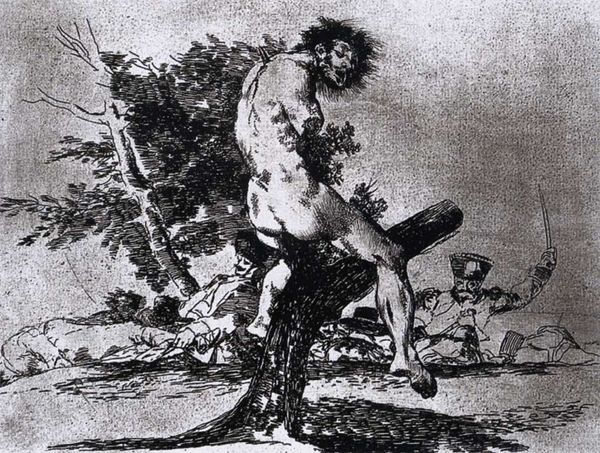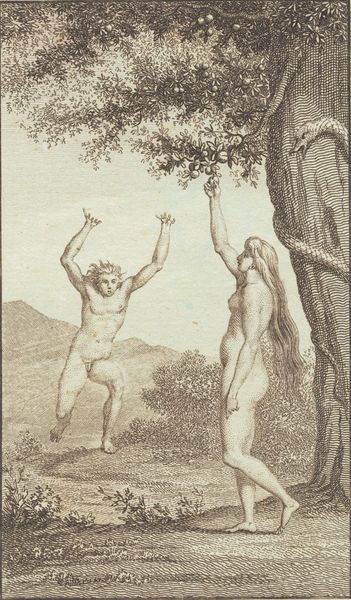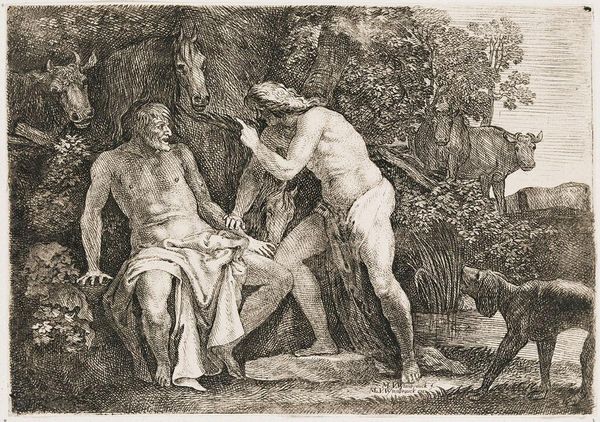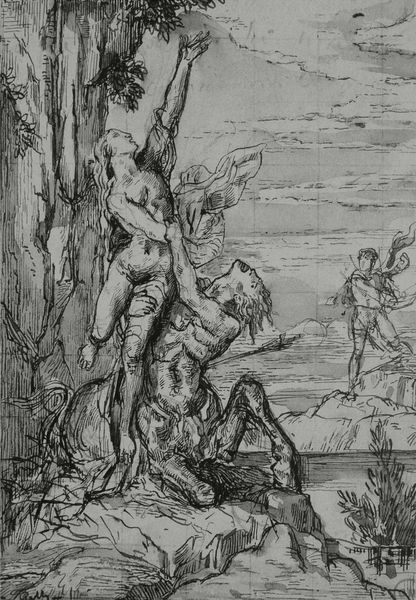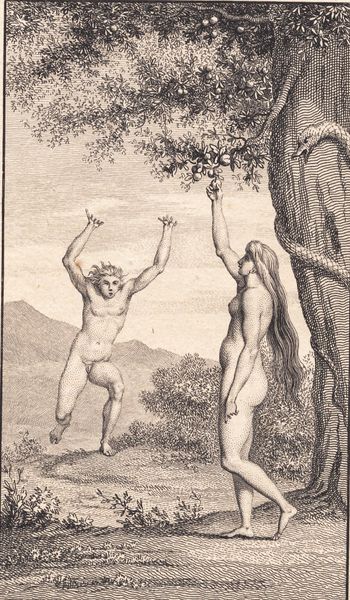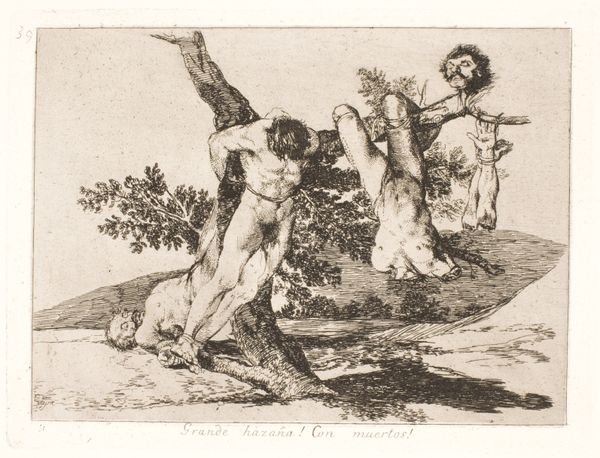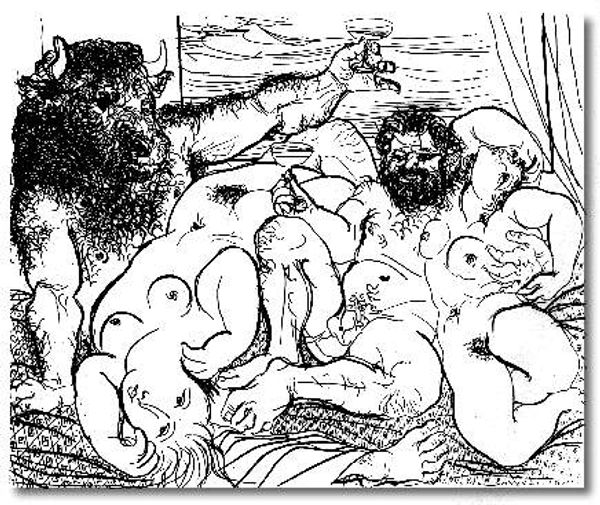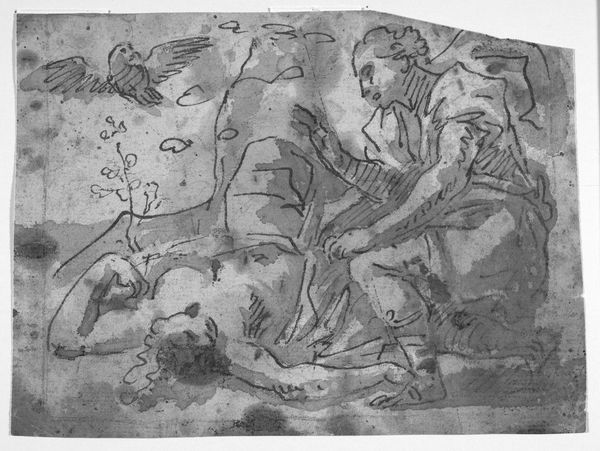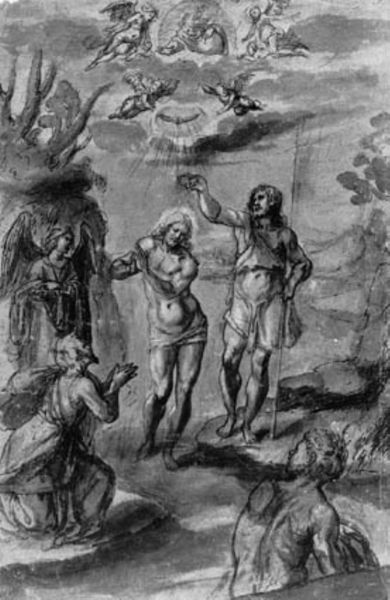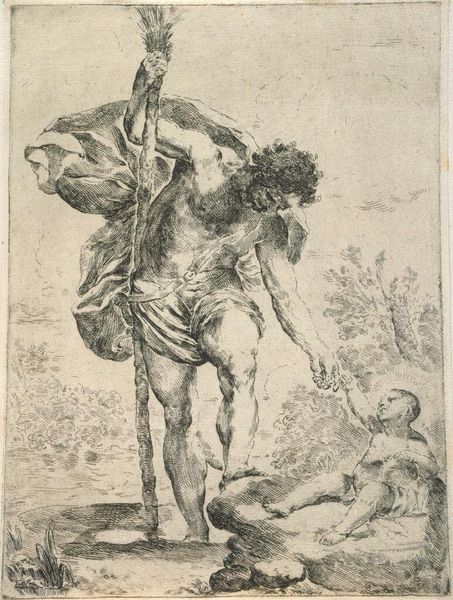
Copyright: Public domain
Editor: We’re looking at Francisco Goya’s etching, "Bazan Grande! With Dead," created in 1814. The print has a very disturbing and unsettling quality. I find it hard to discern its meaning. What do you see in this piece? Curator: Indeed. Note the pronounced linearity in the composition, created with meticulously engraved lines. How do these lines contribute to the overall formal structure, to the almost theatrical arrangement of bodies? Editor: Well, the stark lines emphasize the grotesqueness, particularly in the dead figures hanging from the tree. But why arrange them so dramatically? Curator: Consider the tonal variations achieved through cross-hatching and the creation of dark, almost impenetrable shadows. Do these visual cues suggest a deliberate distortion, an aesthetic language through which Goya renders visible a particular sociopolitical situation? Editor: I guess the arrangement and shading, along with the title, point to some kind of criticism. Curator: Precisely. Focus on the figure supporting the "dead." Notice how Goya uses the figure’s anatomy, with the stark contrast between musculature and the flaccid bodies. It highlights a moral question about agency and impotence in the face of violence. Consider this against other works in the series, "The Disasters of War." How might its visual language build a framework for the narrative? Editor: I see, so Goya isn't just showing the violence; he is carefully building a commentary through the very way he depicts the bodies. It’s all in the details of the composition. Thank you! Curator: Indeed. Attending to the arrangement, line, tone and shadow yields a deeper understanding of the work's critical, and even its ethical, dimensions.
Comments
No comments
Be the first to comment and join the conversation on the ultimate creative platform.
